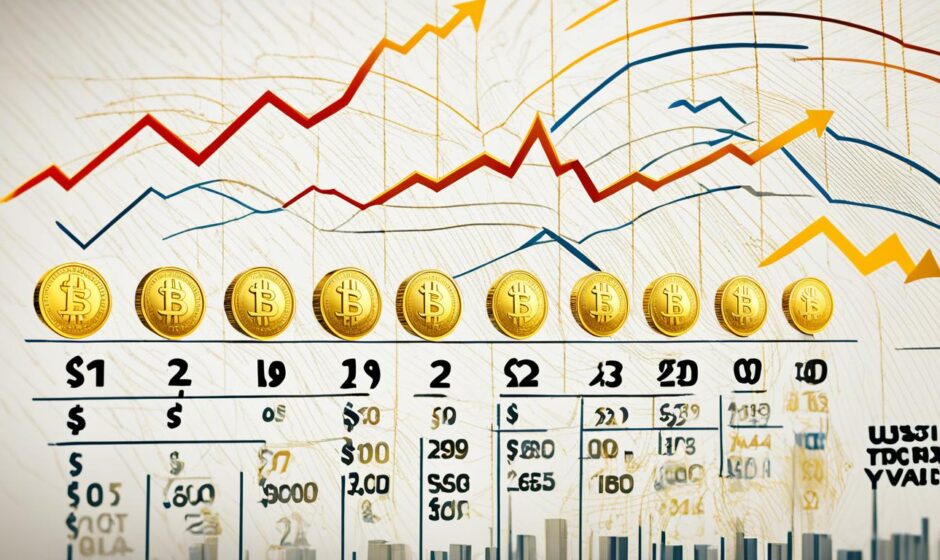Central banks worldwide are increasing their gold purchases at a record pace, making unprecedented strides to bolster their reserves. According to the latest report by the World Gold Council, central banks collectively acquired a remarkable net total of 125 tonnes of gold during the first two months of 2023, marking the highest year-to-date volume since they became net buyers back in 2010.
The primary contributors to these substantial purchases were Singapore, Turkey, China, Russia, and India. These countries, along with others, are diversifying their reserves as they recognize the stability and potential inherent in gold holdings. There are also indications that the BRICS countries – Brazil, Russia, India, China, and South Africa – are increasingly shifting away from the U.S. dollar and gravitating toward gold as a reliable asset.
Reasons for Central Banks’ Gold Purchases
Central banks have been increasing their gold purchases for a variety of reasons, driven by the importance of gold in their reserves and the unique characteristics it offers.
1. Safety and Liquidity
Gold provides central banks with a safe and liquid asset that serves as a reliable store of value.
Unlike other currencies or financial instruments, gold has a proven track record of retaining its worth over time. It is not subject to the same volatility or risks that can impact other assets. This stability makes gold an attractive option for central banks when diversifying their reserves.
Furthermore, gold offers exceptional liquidity. It can be easily sold or exchanged for other currencies, providing central banks with flexibility and confidence in times of economic uncertainty.
2. Diversification Tool
Gold allows central banks to reduce their reliance on any single currency, enhancing the diversification of their reserves.
By holding gold, central banks mitigate the risk associated with relying heavily on a specific currency. This diversification improves the overall stability and resilience of their reserves, reducing the potential negative impact of fluctuations in currency values.
3. Hedge Against Inflation
Gold acts as a hedge against inflation, protecting central banks’ reserves from the erosion of fiat currency values.
As central banks monitor and manage inflationary pressures, they recognize the importance of preserving the purchasing power of their reserves. Gold has historically demonstrated its ability to retain its value and even appreciate during periods of high inflation.
By including gold in their reserves, central banks can safeguard against the potential devaluation of fiat currencies and ensure the long-term stability of their wealth.
4. Return Characteristics
Gold offers attractive return characteristics, providing long-term value and potential upside.
While gold may not generate income like other assets, it serves as a store of value that can appreciate over time. As global uncertainties persist, the demand for gold tends to increase, driving its price higher.
Central banks recognize the potential for gold to deliver attractive returns, making it a strategic addition to their portfolios.
Overall, the safety, liquidity, diversification benefits, hedge against inflation, and return characteristics of gold explain why central banks are increasingly investing in this precious metal.

Gold is the money of kings; silver is the money of gentlemen; barter is the money of peasants; but debt is the money of slaves.
Implications of Central Banks’ Gold Buying
The central banks’ gold buying spree has far-reaching implications for the global economy. Not only does it signify a significant shift away from the dominance of the U.S. dollar, but it also points to the rise of the BRICS countries and their increasing share of the global economy.
The growing trend of central banks from countries such as Brazil, Russia, India, China, and South Africa (BRICS) purchasing gold is a clear indicator of their desire to diversify away from traditional currencies. These emerging economies are actively developing their own payment systems, further reducing their reliance on the U.S. dollar and strengthening their financial independence.
Increasing exposure to gold by central banks will inevitably lead to a positive impact on gold prices. As these institutions continue to accumulate more of the precious metal, the demand-supply dynamics in the gold market will shift, driving prices higher. This presents a favorable opportunity for investors seeking to capitalize on the potential upward trajectory of gold prices.
Investors are urged to consider increasing their exposure to gold and gold miners as this trend intensifies. By diversifying their portfolios and adding gold assets, investors can potentially benefit from the positive impact of central banks’ gold buying on the overall market. The shift away from the U.S. dollar and the BRICS countries’ increasing influence in the global economy make gold a valuable asset for wealth preservation and potential capital appreciation.

Key Implications:
- Shift away from the U.S. dollar
- Increasing share of the global economy held by BRICS countries
- Emerging economies developing their own payment systems
- Increased exposure to gold by central banks
- Positive impact on gold prices
As central banks continue to bolster their gold reserves, the implications for the global economy cannot be ignored. The geopolitical landscape is shifting, and investors must adapt their strategies to navigate through the changes. The increasing significance of gold in the global monetary system presents opportunities for those who recognize the evolving dynamics and position themselves accordingly.
Market Outlook and Recommendations
The market outlook for gold remains positive, especially in times of economic uncertainty when it is considered a safe-haven asset. In recent times, we have witnessed a significant increase in gold-backed ETF inflows, indicating a growing interest among investors in this precious metal. With the potential for a global recession on the horizon and ongoing geopolitical tensions, investing in gold and gold stocks can be a prudent strategy.
To take advantage of the potential upside of gold, it is recommended to allocate a portion of your portfolio to this asset class. A suggested asset allocation is to allocate 10% of your portfolio to gold. This allocation can be further divided into 5% for physical gold and 5% for high-quality gold mining stocks, mutual funds, or ETFs.
By following this recommended asset allocation strategy, investors can benefit from the role of gold as a hedge against economic uncertainty and inflation. As a tangible asset, gold provides stability and preserves its value even during turbulent times. Additionally, investing in gold mining stocks can offer potential growth opportunities and exposure to the performance of the gold market.
